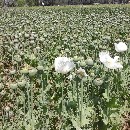Ag Group

Ag Group

Mesothelioma, A life-threatening illness
Mesothelioma is a type of cancer that develops from the thin layer of tissue that covers many of the internal organs (known as the mesothelium). The most common area affected is the lining of the lungs and chest wall. ... More than 80% of mesothelioma cases are caused by exposure to asbestos.
The majority of mesothelioma patients learn of their disease when it’s too late, and they often do not survive beyond two years after their diagnosis. But, a number of mesothelioma survivors have extended their survival by electing cancer treatments, participating in innovative clinical trials and integrating alternative therapies.
Mesothelioma is an aggressive, malignant cancer caused when inhaled asbestos fibers lodge in the lining of the lungs, abdomen or heart. Symptoms can include shortness of breath and chest pain. The life expectancy for most mesothelioma patients is approximately 12 months after diagnosis.
The most common mesothelioma symptomsinclude:
- Dry cough or wheezing.
- Shortness of breath (dyspnea)
- Respiratory complications.
- Pain in the chest or abdomen.
- Fever or night sweats.
- Pleural effusion (fluid around the lungs)
- Muscle weakness.

Mesothelioma Treatments:
Treatment for mesothelioma depends on a number of things, including those mentioned above. Three standard types of treatment are used: surgery, radiation, and chemotherapy. Treating mesothelioma often involves a combination of two or all three.
Surgery. The main surgeries used in mesothelioma treatment are:
- Wide local excision, which removes the cancer along with some of the healthy surrounding tissue
- Pleurectomy and decortication, in which the surgeon removes part of the covering of the lungs, chest lining, and outside surface of the lungs
- Extrapleural pneumonectomy, which involves removing one whole lung and part of the lining of the chest, the diaphragm, and the lining of the sac around the heart
- Pleurodesis, which involves using a chemical or drug to make the lung lining scar and stick to the lung. The scarring stops the buildup of fluid. This is used for symptom control and isn’t meant to be a cure.
Radiation therapy. This type of cancer treatment uses high-energy X-rays and other types of radiation to kill mesothelioma cells or keep them from growing. Radiation may be given externally or internally. External radiation therapy uses a machine outside the body to send radiation toward the cancer. Internal radiation uses a radioactive substance sealed in needles, seeds, wires, or catheters that are placed directly into the area near the mesothelioma.
Chemotherapy. This uses drugs to stop the growth of cancerous mesothelioma cells, either by killing the cells or by stopping them from dividing. Chemotherapy can be given by mouth, injected into a vein or muscle to enter the bloodstream and reach mesothelioma cells throughout the body, or it can be placed directly into the affected area of the body to mainly affect mesothelioma cells in that area. Sometimes, doctors use more than one chemotherapy drug. This is called combination chemotherapy.
Write Your Reviews